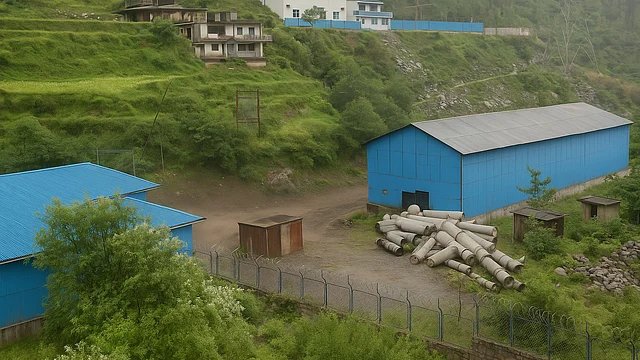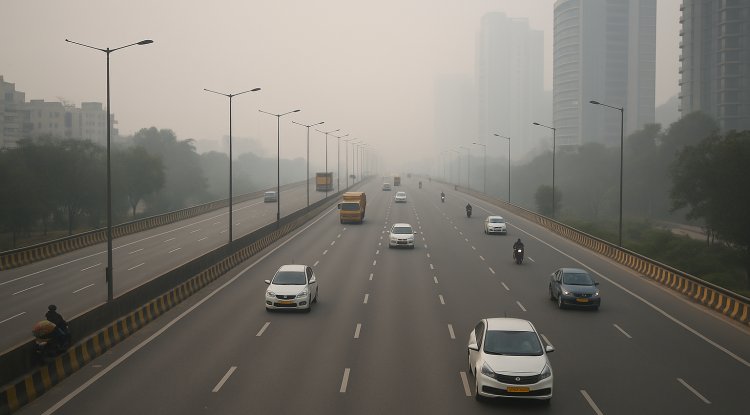Flash Floods & Landslides Wreak Havoc in Himachal: State on High Alert
Severe monsoon rains since June 20, 2025, have killed 23 in Himachal Pradesh, causing landslides, flash floods, and infrastructure collapse. With rainfall 34% above average, climate change is driving extreme weather, highlighting the urgent need for resilient infrastructure, early warnings, and long-term solutions like soil bioengineering.

Heavy monsoon rains in Himachal Pradesh have killed 23 people and damaged infrastructure as well as inflicting significant damage since 20 June 2025. Landslides, flash floods, and cloudbursts have closed 259 roads, damaged 614 transformers, and halted 130 water supply projects. With 135 mm of rain in June, the state had its 21st worst June rainfall since 1901, 34% above the 101 mm average. Authorities have cautioned residents to avoid erratic areas and waterways and sent warnings. In an effort to lessen future monsoon impacts, the government is giving relief and long- run solutions first priority.
Starting June 20, the monsoons wreaked severe damage throughout Himachal Pradesh. While Sirmaur documented 92 road closures brought on by landslides and flash storms, Mandi closed 129 roads. Though prior evacuation saved lives, a five-story structure in Shimlas Bhatta Kuffar collapsed on June 30. Landslides in 18 zones cut off contacts; cloudbursts in Rampur carried away homes. Along with growing repair costs, the state emergency operations centre observed considerable infrastructure damage. Driven by climate change, the torrential downpour highlights the increasing intensity of monsoon storms, hence creating challenges for disaster relief.
Himachal Pradesh's susceptibility to monsoon-related disasters is well recorded. Intense rains cause landslides exacerbated by mountain geology and deforestation every year. Wayand, Kerala, endured similar damage in 2024 with 300 deaths and 1,200 crore in damage from flash floods. Rising temperatures aggravating these phenomena triggered by climate change are changing precipitation patterns. Capturing this trend, the 34% extra rainfall in the states in June 2025 surpasses historical averages. Though the IMDs red and orange warnings for severe rains prepared authorities, the degree of damage overwhelmed regional response networks.
Government responses have been directed toward instant relief and infrastructural repair. Sub-divisional magistrates were advised to be vigilant; guests were advised to pay attention to weather forecasts. Even though the states' disaster management plan includes evacuation procedures, obstacles such choked highways hampered aid efforts. One suggested long-term answer, soil bioengineering might reduce erosion during heavy rains and stabilise slopes. Still, implementing such measures requires substantial technological proficiency and financial resources. Though government collaboration with the IMD guarantees fast notifications, insufficient local-level readiness results from scarce resources
Severe economic effects include disturbance to transport, power, and water supply that impact daily life and tourism—a major source of income. Closure of 259 roads, including important freeways, has isolated settlements and hence damaged business. The damage to 614 transformers and 130 water systems, which has increased recovery costs, has disrupted critical services. Flooded fields and late planting threaten another pillar of the economy: agriculture. The reliance of the states on central government assistance to rebuild stresses the need of a long-lasting infrastructure resistant to extreme weather.
As scientists link increased rainfall intensity to global warming, climate change will exacerbate these challenges. Carbon dioxide levels reached 425 ppm in 2024, according to the IMD, which led to a 0.15C increase per decade since 1950. This warming drives more intense monsoons, hence increasing the risk of landslides and floods. Further increasing vulnerability is Himachals deforestation and random urbanisation, as construction degrades slopes.
Though vulnerable groups including low-income people and farmers are particularly impacted, community resilience is essential. Though many people lost homes and jobs, the states' efforts to evacuate at-risk regions like Bhatta Kuffar saved life. As seen in other climate catastrophes like Wayanad, social inequities worsen these effects for excluded groups. The IMDs CAP supported early warning systems and public awareness campaigns, therefore lowering death, yet more funding is needed to protect vulnerable communities for local disaster readiness.
The devastation brought on by the monsoons in Himachal Pradesh points up the urgent need for disaster preparedness and climate-resilient infrastructure. While immediate relief efforts are ongoing, long-term solutions including soil bioengineering and reforestation are essential to reduce future risks. More funding and closer collaboration with the IMD may enhance resiliency, hence protecting means and lives in this delicate area.
What's Your Reaction?

















